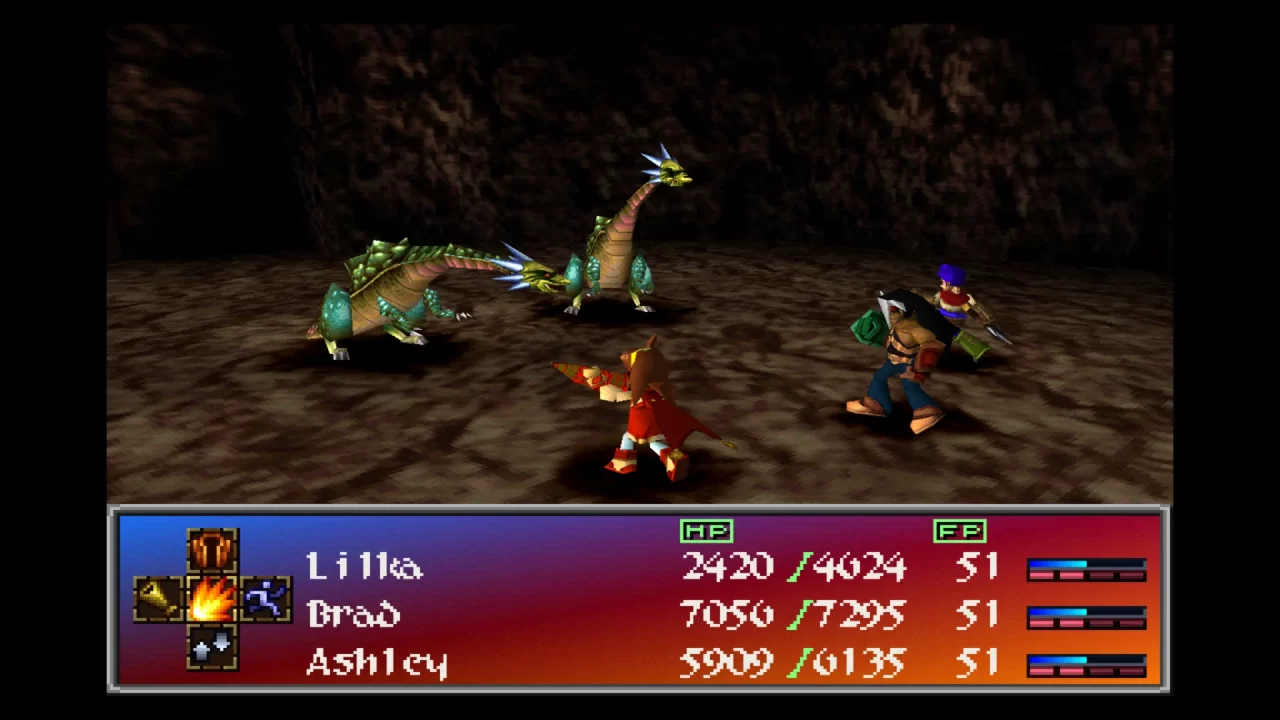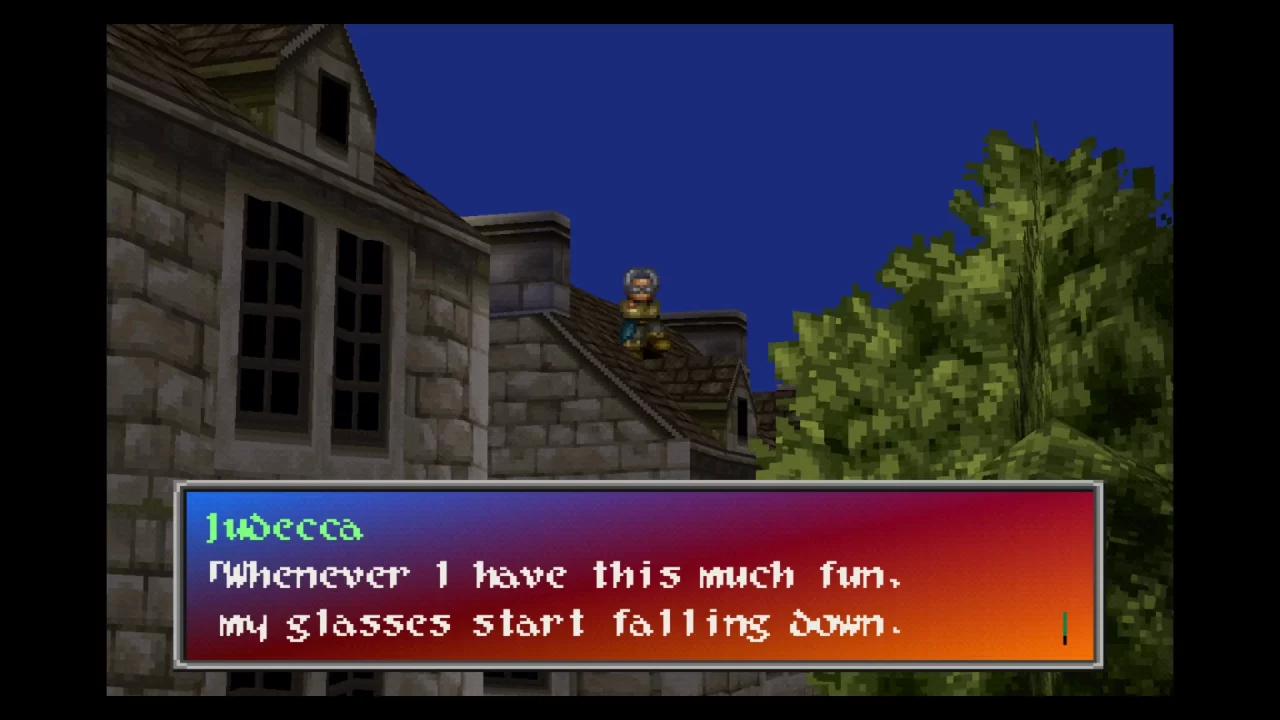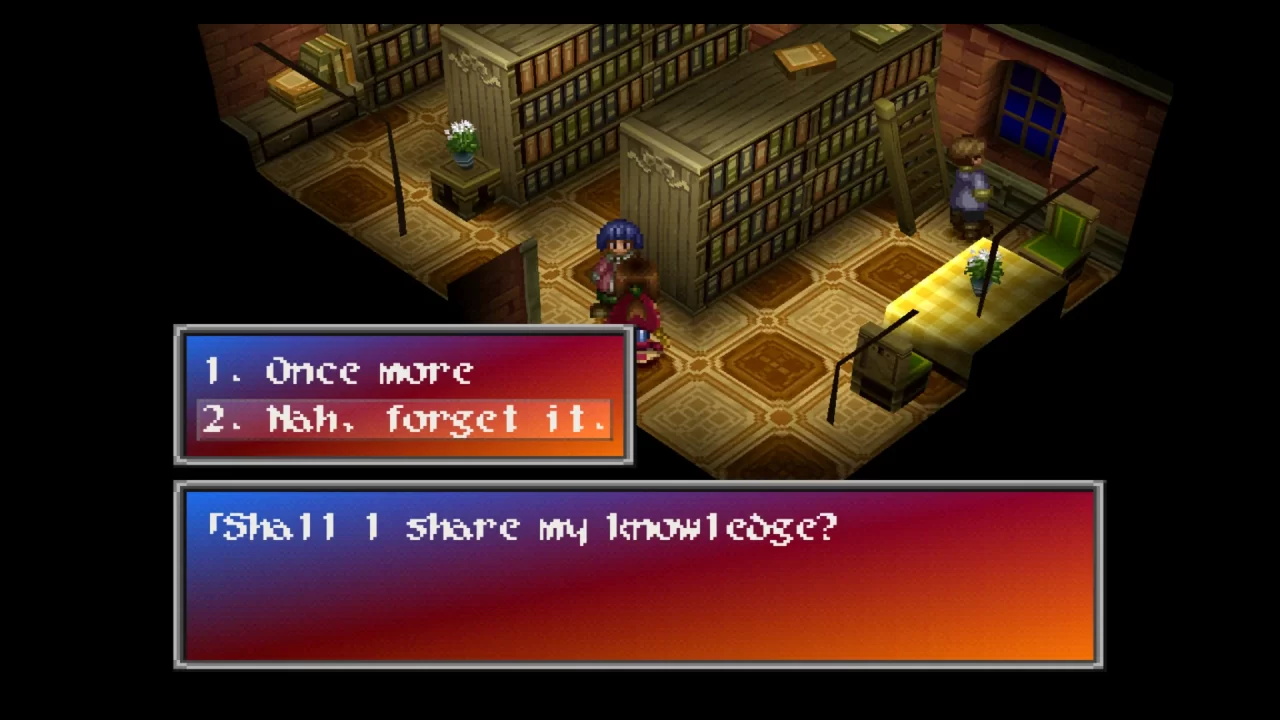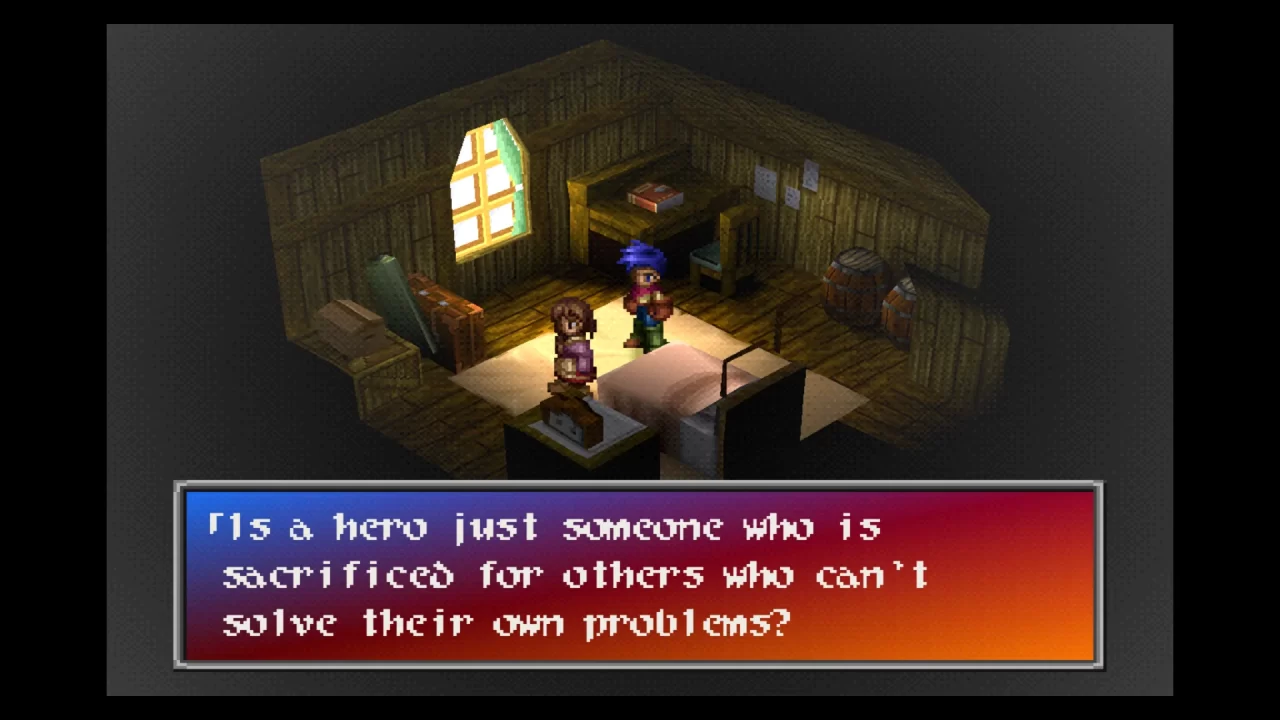Once more, a western wind blows across the realm of Filgaia. Once more, developer Media.Vision has presented a flawed but brilliant gem of a JRPG title with Wild ARMs: 2nd Ignition (1999 in Japan), or, as we Westerners plainly know it, Wild ARMs 2. By the time of its English release in 2000, Wild Arms 2 was pitted against a titanic legacy of JRPGs (on arguably the greatest JRPG-machine of all time, the PlayStation), so its traditional gameplay sensibilities and modest visual style did little to stand out against its more envelope-pushing contemporaries. With the PS5 remaster two and a half decades after release, Wild ARMs 2 delights with its mechanics and music, but frustrates in equal measure with its stiff translation and odd pacing. It will ask of you: What is a hero? Is the sacrificing of lives truly necessary for peace? And just what the hell are these lizards saying?
The world of Filgaia returns as the setting, now more aesthetically fulfilling the series’ promise of a fantasy/sci-fi Wild West. This continuation is really in name and concept alone, as the layout of the world map is completely different, and there are only occasional visually overlapping references to the first game, though I much prefer the presentation here. Formerly chibi characters are now slightly elongated sprites on isometric 3D environments, similar to Final Fantasy Tactics, including the ability to swing the camera fully around you with L1/R1, which becomes necessary for many hidden puzzles and details in the world.
There’s a surprising legacy around Wild ARMs 2 being ugly, yet I think it holds up far better than many PSX games—it’s full of bright, warm colours evoking the high plains of the American West, the characters are anime-cute without being deformedly so, and the towns are diverse and rife with details imbuing them with a personality only implied in Wild ARMs 1 (which was truly ugly as sin, like trekking through a cat’s litter box). My only complaint is that the many dungeons, though each has a unique visual palette, are rather boxy and featureless compared to towns. But if you’re worried about getting lost in camera spinning, there is a constant red compass pointing northwards that keeps you from getting lost when, say, returning to the dungeon screen from a random encounter battle.
Filgaia faces a demonic, otherworldly threat once again that remains obscured for much of the thirty-something-hour story. The first disc (of two) focuses on a much more grounded struggle against Odessa, a technologically advanced terrorist group seeking world domination…or something. Like Wild ARMs 1, you begin by playing the individual prologues for three main characters: Ashley Winchester (fantastic name, though not quite Rudy Roughknight), a blue-haired gunslinger seeking to protect his humble life in the town of Meria; Lilka, a clumsy crest-sorceress tired of living in the shadow of her talented older sister; and Brad, a war hero-turned prisoner who is good at kicking stuff. The cast of three gradually expands to five (plus a hidden sixth character), each of whom gets a fair spotlight throughout the story and feels viable in the three-person battles against the numerous monsters of the wilds. There are echoes of Wild ARMs 1‘s cast, both in character roles and puzzle-solving tools (collectible abilities like fire wands, bombs, and hookshots).
A mysterious benefactor, Irving, recruits the main cast into his private militant group, ARMS, which seeks to step beyond the bureaucracy and petty squabbles of Filgaia’s kingdoms to protect the world against Odessa and the dark magicks they herald. The story essentially sees you reacting to and defending against Odessa’s movements, with Irving briefing and sending you around the globe on brief missions. This allows for some swings and surprises in the plot, but the mid-game dragged on for me for multiple reasons: the trivial difficulty and the terrible, horrible, no good, very bad translation.
Let’s start with the difficulty. The first Wild ARMs was challenging and filled end-to-end with finely tuned, nail-biter boss battles. Until the hidden superbosses in Wild ARMs 2’s excellent open-world endgame, I don’t think a single character of mine was downed once. New to the game is the Personal Skill system, in which each character gains a PS point when levelling up that can bolster stats such as Physical and Magical Attack and Defense, reducing many enemies’ attacks to a whopping “0” damage.
Then, the HP Up Skill, which grows your health pool with each level, dramatically tanks up your characters if you take the skill early enough. And that’s not to mention using Lucky Card items to double XP from bosses! To min-max and break the game requires only basic engagement with its systems. Random encounter enemies go down in one physical attack (even from mage characters), and bosses can’t come close to Lilka’s (and later the summoner character, Tim’s) healing output. I did have a constant positive outlook on this, though: Wild Arms 2 would still make an excellent first experience for JRPG newcomers. When I finally reached the final dungeon and subsequent endgame sidequests, the battle tuning finally clicked—I even pulled my first all-nighter in over a decade, joyfully cleaning up the world map of its most valuable treasures and most frightening bosses.
I must address the translation. So, living in Japan my whole adult life has steeled me against bad English phrasing. I can, for example, laugh at and be charmed by the odd English lines written on my laundry hamper: The memories of yesterday are a laundry today. I’m going to be happy. If I tilt my head a bit, it’s even profound. Now imagine reading this kind of pseudopoetic drivel for thirty hours. That’s Wild Arms 2.
It starts out simple and innocuous enough, but as the game’s thematic content grows in complexity and characters begin longer and longer diatribes on themes of sacrifice and heroism, the translation becomes increasingly unintelligible, gutting the story and characters of the maturity and depth that’s handled fairly well in the native Japanese. Wild ARMs 1 made cutesy little mistakes but was wholly understandable and affecting with its writing; Wild ARMs 2 is verbose, heady, and utterly inane, to the point where late-game characters like the demon hunter Kanon’s motivations bounce completely off me. I couldn’t understand the intention behind dialogue seventy percent of the time. Simply said, this game deserves a retranslation, and the original English script belongs in the bowels of Hell.
Let’s pull back to the many strengths. My biggest annoyance with Wild ARMs 1, the incessant and unrewarding random battles, is completely fixed in 2! The random encounter rate is vastly reduced and telegraphed by an exclamation mark bubble (“!”) with the ability to cancel it with a button press—unless the bubble is red, indicating an ambush. The more you shirk battles, the more likely the bubbles will come. The monster designs, too, are hugely improved over the polygonal eyesores in the first game. Bosses have straightforward yet attractive designs, including multifaceted sections you can destroy for extra XP. Random battles are quick, and the shared XP even to non-active party members is generous, meaning you can focus on the many puzzles in dungeons. The puzzles are solid and varied, incorporating logic with the three tools unique to each character. There are a couple of classically annoying JRPG “teleporter puzzles,” but combined with the low enemy encounter rate, it’s never too daunting.
The obscure story progression triggers in the first game are here replaced by a communicator device between your party and Irving, who directly points you to your next objective via compass directions. In terms of abilities, MP doesn’t drain with usage of spells and skills, but rather increases through giving and taking damage, meaning rather than returning to towns for inns and items, you can keep battling and exploring to fuel your healing spells. And while the first Wild ARMs’ gunslinger, Rudy, was a silent protagonist, 2’s hero, Ashley, is opinionated and full of pathos, further complicated by his battle with his literal inner-demon, who emerges through special transformation skills in battle. Of the handful of heartfelt story moments (when you discern them through the translation, at least), I loved Ashley’s constant returning to and longing for his hometown and to his sweetheart, Marina. Ashley stands above the rest of the cast, on par with the wonderful Cecelia and Jack from the first game.
Last but maybe most important is composer Michiko Naruke’s incredible music for this game. Old West whistles and woodwinds are constants, filling the world with a sense of dust-strewn swashbuckling. The soundtrack evokes a consistent light tone inseparable from this series, while never feeling repetitive, annoying, or invasive. I often think how, alongside gameplay, music is a vital component to JRPGs, and this is lowkey one of the best soundtracks on the PSX.
As a very JRPG-ish JRPG, Wild ARMs 2 gets a lot right with its forward-thinking design sensibilities and its (mostly) evergreen aesthetics and soundtrack. The bulk of the story drags on, with the latter half particularly dragged down by the stiff and vague translation, but it redeems itself with some amazing endgame side content. If you’re going to play this, I strongly recommend going the full distance with all it has to offer in its forty hours. Wild ARMs 2 is the tortoise that has slowly caught up and surpassed many of the hares of its PSX JRPG contemporaries, emerging as a must-play for RPGFans while nevertheless starving for a more thorough remake or, at the very least, a retranslation.






